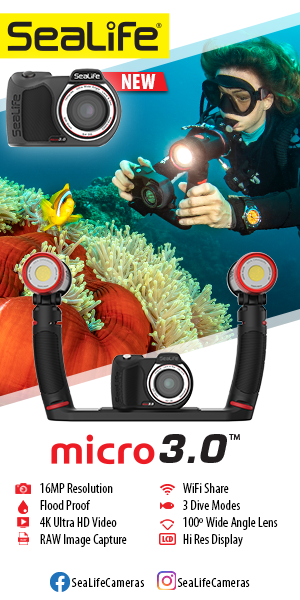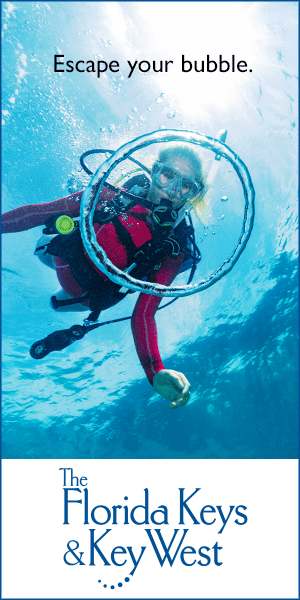On a recent trip to Palau, we began our trek early in the morning and flew from Raleigh, North Carolina, to LA, on to Hawaii, then Guam and finally Palau. We were into our 35th hour of traveling and we looked at each other for what was yet another “are we there yet?” moment when Palau revealed itself. The landscape below us was nothing short of breathtaking. Our travel weariness fell away. That single moment looking down on the turquoise blue of the ocean and the jungle-rich green of Palau’s Rock Islands had just made the long trip all worthwhile. The incredible diving yet to come would only make the trip that much better.
The Women Rule!
Palau’s archipelago, lying 800 miles (1,280 km) southwest of Guam, forms the westernmost cluster of the six major island groups that make up the Caroline Islands. The Caroline Islands are considered part of Micronesia. Belau, the indigenous name, consists of more than 200 islands. The 65-mile- (104-km-) long barrier reef that runs along the west side of Palau shelters a wide lagoon that is rich with coral and marine life. Near the middle-eastern side of the lagoon are the hundreds of tiny umbrella-shaped limestone islands known as the Rock Islands.
The original settlers of Palau are believed to have arrived from Indonesia as early as 2500 B.C. Palau’s proximity to Southeast Asia has led to the population being a melting pot of Malay, Melanesian, Filipino, and Polynesian ancestry. Palau’s abundant natural resources allowed the early Palauans to take more time to practice artistic skills. The women were fine weavers and the men carved elaborately from wood. Storyboards are still a popular craft today.
The early Palauans also developed a complex and highly organized clan structure that was related through the mother’s side of the family. Men ruled as chiefs, but it was the women who chose those chiefs and it was also the women who could remove someone’s status as chief. Women also held the money of the clan.
The first European contact was made by Captain Henry Wilson in 1783, when his vessel shipwrecked on Ulong Island. The British controlled trade until 1885 when Spain took over control. The Spanish influence lasted until they lost the Spanish-American War in 1899 and sold Palau along with the rest of the Caroline Islands to Germany. Following Germany’s defeat in World War I, the islands were passed to the Japanese. With Japanese control also came a shift from a subsistence economy to a market economy. In 1922, the capital city of Koror became the administrative center for all Japanese possessions in the South Pacific.
During World War II the islands were also the location for several fierce battles. Today, remnants from these battles contribute to Palau’s fine underwater wreck diving and some interesting discoveries on land. Following Japan’s defeat in this war, the Carolines, Marianas and Marshall Islands became United Nations Trust Territories under U.S. administration. As part of its mandate, the United States was to improve Palau’s infrastructure and educational system for it to become a self-sufficient nation. This finally came about on October 1, 1994, when Palau gained its independence with the signing of the Compact of Free Association with the United States. Palau continues to use the U.S. dollar as its official monetary unit.
The Seventh Underwater Wonder of the World
Three major ocean currents meet in Palau, bringing nutrient-rich water and an enormous variety of marine life to this area. This confluence of currents gives Palau a remarkable diversity in diving venues ranging from stunning walls, coral gardens, and World War II wrecks to heart-pumping drift dives with grey reef sharks. The waters surrounding the Rock Islands teem with more than 1,500 varieties of fish and more than four times the number of coral species than is found in the Caribbean.
Getting to the dive sites is easy. You can choose one of the operators in Koror that offer day trips out to the various sites or you can spend your time on a live-aboard cruising through the Rock Islands. Diving in Palau is primarily tide dependent and thus drift diving is the norm. For those on live-aboards this means diving from skiffs. A word of caution: Make sure that you do carry some sort of surface signaling device (i.e., a “safety sausage” and whistle or Dive Alert™ horn) so that the skiff operator can easily spot you and pick you up at the end of the dive.
Palau has far too many wonderful dive sites to recount here, but the true “signature” dive for us is the site known as Blue Corner. At Blue Corner, in 50-60 feet (15-18 m) of water, with currents sometimes up to 3 knots, you get to watch the “shark parade.” Gray reef sharks zip by the edge of a wall as cleaner fish rid them of parasites. Although the sharks get the majority of the attention, you have to spend some time playing with a large, 5-foot (1.5-m) Napoleon wrasse known as Einstein. Einstein has a taste for hardboiled eggs and will snap them out of your hand all day long.
Not far from Blue Corner is an incredible wall dive called New Dropoff. Here the wall starts at just 15 feet (4.5 m) below the surface. Colorful soft corals and fans crowd the walls along with schools of fish. Turtles and Napoleon wrasse along with gray reef sharks patrol the area.
Peleliu Wall, southwest of the island of Peleliu, is one of the finest dive sites we have been to, with an abrupt 900-foot (273-m) drop and scores of sharks, hawksbill turtles, mammoth gorgonian fans and an amazing variety of fish. Currents can definitely be strong along this wall but it is well worth the effort to see it.
If you love cuttlefish and most of us do, then Ngerchong Channel is the place to be. Giant cuttlefish can be found most times in the channel. If you happen to be there during the April/May timeframe look for their eggs that they lay inside the brain corals along the channel.
Although not a dive, Jellyfish Lake is a must-do while on a visit to Palau. Millions of years ago, jellyfish were trapped in this lake after a submerged reef rose from the sea, creating a landlocked saltwater lake. In this lake, the jellyfish have adapted to the new conditions by losing their sting. During the day the jellyfish follow the sun and stay at the surface. At night the jellyfish swim to a lower depth. A hike through the forest will bring you to this briny pond where you can snorkel into the sea of jellyfish. When you first start out, there just may be a few of these pulsing umbrella-shaped creatures but soon hundreds of them will surround you.
One of Palau’s most popular wreck dives is the Iro Maru. This oil tanker was sunk in 1944 and is now home to all sorts of critters. World War II artifacts such as gas masks can still be seen on the wreck. Removing these items is illegal so just take photographs as a remembrance.
For the more technical divers, cavern and cave systems can be found throughout the limestone Rock Islands of Palau, both above and below the water. One of the most popular cavern dives is Chandelier Cave near Koror. This is a unique cavern and affords divers of all levels the experience of diving in an overhead environment. There are several air chambers along the cavern’s roof, making for a great rest stop and an excellent place to snap some photos.
Exploring Topside
Koror is the point of arrival for most visitors. If you take a day at the start of your trip to acclimatize after the long flight, consider visiting the Belau National Museum. The museum has exhibits ranging from the mounted head of a 15-foot (4.5-m) crocodile to Palauan bead and shell money, beautifully carved storyboards and other local artifacts and crafts. There is also a wood-and-thatch bai (communal meeting center) and remnants from the war.
On Malakal Island, across from Koror, is the Micronesia Mariculture Demonstration Center. This is a research marine lab that has succeeded in cultivating giant tridacna clams. While we were there we also did a hike up Malakal Hill to get a great view and snap some pictures of the Rock Islands.
The thickly jungled Babeldaob, the largest island in Micronesia after Guam, is a high, volcanic island with rolling hills, beautiful stretches of sandy beach on the east coast and mangrove forests on the west. Many of the island’s hillsides were once terraced into steps and pyramids. In Ngarchelong State, at the northernmost end of the island, you can explore the 37 stone monoliths known as Badrulchau.
The island of Peleliu, at the southernmost end of the Rock Islands, was designated a U.S. National Historic Landmark in 1985. Peleliu was the site of some of the bloodiest battles of World War II. It was here that in just over two months there more than 20,000 people lost their life. Many of the island’s residents today are survivors of that campaign. You can still discover many war artifacts such as abandoned tanks, helmets and bomb casings as you wander around the island.
The Palau Aquarium at the Palau International Coral Reef Center is Palau’s newest land-based marine attraction. Aquariums and pools are filled with local marine life. Two exciting exhibits include the chambered nautilus display and the giant clam garden.
Dolphins Pacific offers visitors the opportunity to swim with and interact with dolphins in a protected lagoon.
Accommodations & Amenities
Koror offers the most in accommodations, restaurants and shopping. There are a variety of hotel accommodations, from full-service, luxury resorts to economical motels and bungalows. There are a good variety of restaurants offering fresh local seafood as well as local dishes and more traditional American, Chinese and Japanese fare.
We are a very lucky couple. We have had the opportunity to travel and dive some of the most prized dive destinations in the world. Few locations however have captured our imagination and presented us with as much diversity, beauty and pure diving pleasure as Palau. Life is short and our life lists are long; make sure your Palau trip is as close to the top as you can get it.





